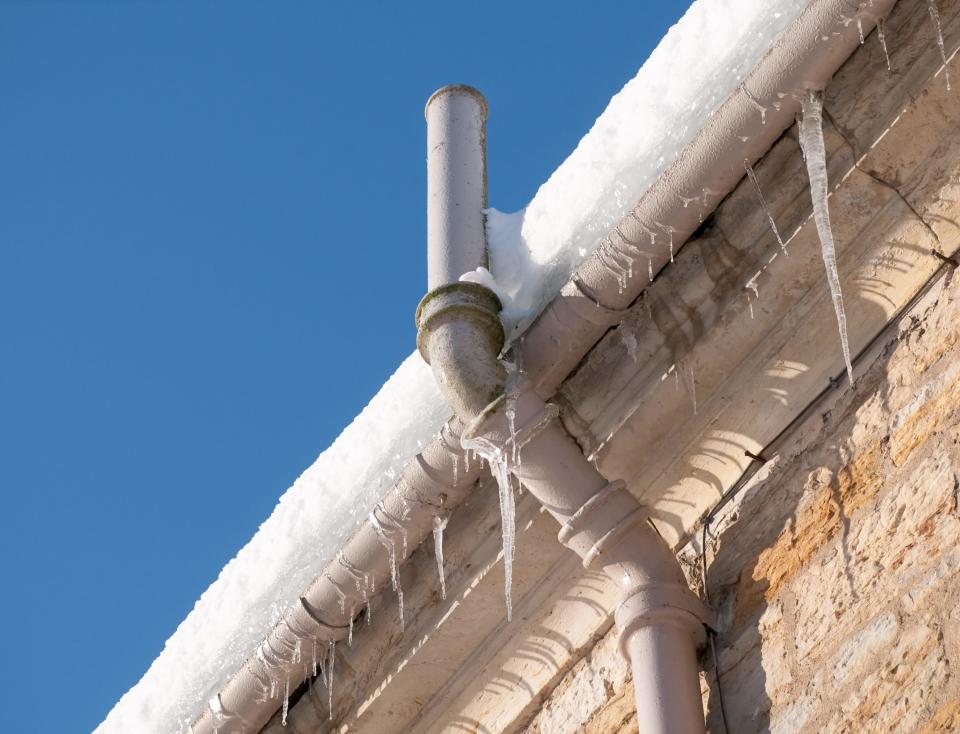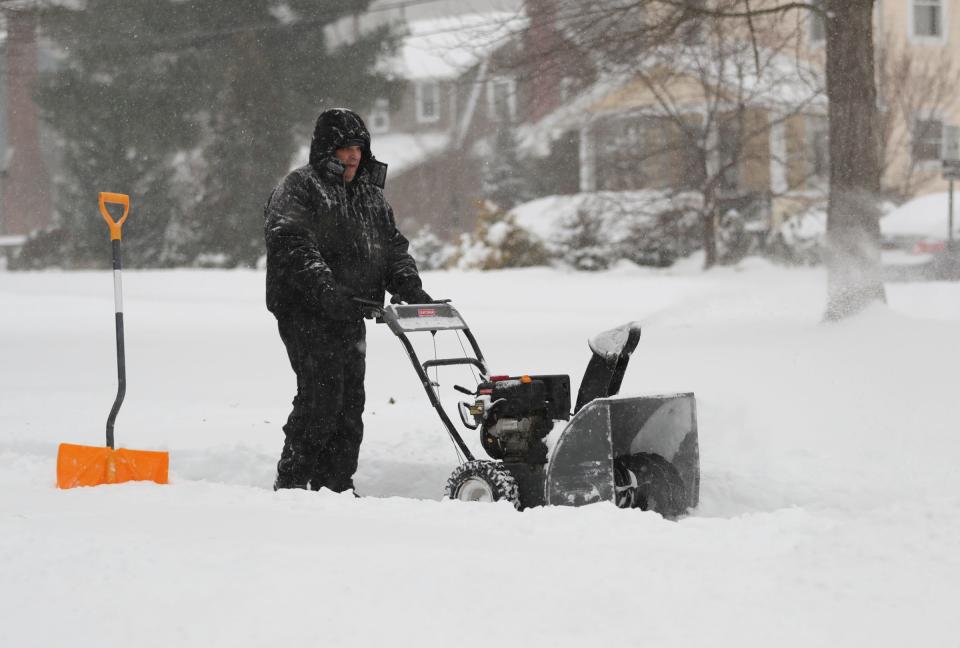How to get your Lower Hudson home ready for winter. What to know
Instead of gazing too much at the autumn leaves, now is a good time to prepare your home for winter.
Though the task may appear daunting, there are some simple ways to weatherize one's home for winter, according to the New York State Homes and Community Renewal agency and other experts,:
Clean your gutters
Clogged gutters lead to ice dam buildup and floating ice. Why is this a problem? Hot air rises and warms up the roof, causing ice and snow to melt. This can lead to water spots inside your home.

Change ceiling fans to rotate correctly
In the winter, ceiling fans can rotate air flow so that an updraft of hot air can be circulated around the room. But you have to hit the switch on your fan so it spins clockwise. Ceiling fans generally spit counterclockwise during the summer to create a downdraft.
Flush your water heater
Unless you have a tankless water heater, sediment gathers inside, impeding the water flow. Homes and Community Renewal suggests The Family Handyman as one of many videos that can walk you through how to remove sediment.
Get your roof inspected and repaired
A roof that needs maintenance can cause structural issues and lead to water damage during the winter.
You can have a professional check for shingles that are missing, loose or showing other signs of damage. Additionally, they can check for damage to the roof's flashing, which is located along the intersections of the roof and its joints, and can direct water off your roof to prevent its leaking into your home.
You should also check for any water stains on your ceilings or signs of moisture in your attic to determine whether there are any leaks in the roof. Ensure your attic is properly insulated to prevent ice dams from forming on your roof.
Check your smoke alarms and carbon monoxide detectors
There are many types of heat sources people utilize during the winter, all of which could cause a fire or the release of carbon monoxide if not used properly. Before winter comes, check all of your smoke alarms and carbon monoxide detectors to ensure they are functioning properly and have fresh batteries.
Clean your HVAC system filter
If your home has an HVAC system, then it's important to check the quality of the filter before turning on the heat to prevent debris from clogging the system.
Always check the filter's expiration date or for any physical damage, including holes, to know if it needs to be replaced. If it's in good condition and just needs a clean, then you can do so by vacuuming any dust and debris off the filter and rinsing it thoroughly with hot water.
Have your heating system checked
While you're replacing your filter, have the heating system checked by a professional, says the state Department of Public Service. If you're heating with wood, clean your stove or fireplace. Check the chimney flue for any creosote buildup and have it cleaned to reduce the risk of fire.
Turn off outdoor water sources
Pretty much all homes come with an outside water faucet for maintenance needs. Because water freezing in pipes is a common occurrence during the winter — and could cause pipes to burst — it's best to drain them. If you have an outdoor sprinkler or irrigation system, those should also be drained.
Outdoor faucet covers can be installed, sealing tightly around the base of the faucet and trapping heat that naturally radiates through the interior pipes to the outdoor spigot. The cover prevents water in the faucet from freezing, expanding and rupturing the spigot.
Also, keep pipes from freezing by wrapping them in insulation or heat tape.

Get your snow supplies ready
Make sure you pull out your snow supplies before that first snow hits. This includes shovels, snow blowers and sidewalk salt. You don't want to get stuck without any way to clean up and make your walkways safe.
Also, gather and store emergency supplies such as:
A battery-operated radio and flashlight, as well as a supply of batteries, candles and matches
Water, medications and foods that don’t require refrigeration or cooking
A telephone that does not require electricity to operate
A list of emergency telephone numbers
Extra blankets, coats, hats, and gloves
A first aid kit and manual
A fire extinguisher
Need weatherization assistance?
The New York State Weatherization Assistance Program provides free services for income-eligible homeowners as well as renters. Services include heating system repairs and the replacement or insulation of attics or walls. Visit their website for more about the program.
What happens if I lose heat?
If your heat goes out, the state Department of Public Service says:
Use only safe sources of alternative heat such as a fireplace, a small, well-vented wood or coal stove or portable space heaters. Always follow manufacturer’s instructions;
Dress in layers of lightweight clothing and wear a cap;
Close off rooms you do not need.
You should also know the signs of hyperthermia (shivering, drowsiness, slowness) and how to treat it (wrap the person in warm clothing, move to a warm location and seek medical help). Check on people with special needs (the elderly or those dependent on life-sustaining or health-related equipment such as ventilators and respirators).
What is a Code Blue warning?
A Code Blue warning is triggered when temperatures reach 32 degrees or lower and requires shelter access to anyone in need of assistance.
In Westchester County, those seeking shelter should contact their local municipality first to see if there is assistance close to home. Residents can also call the county emergency services hotline at 914-995-2099, which is available 24 hours a day, seven days a week.
The county has a list of five warming and drop-in shelters available on its website.
Rockland County also maintains a list of warming centers, and asks that people call before going to confirm the shelter is open.
Other sites in Rockland may become available as needed. Individual municipality websites should also be consulted for additional information and updates.
Maddie McGay contributed to this story.
This article originally appeared on Rockland/Westchester Journal News: How to prepare your Hudson Valley NY home for winter

